Showing Spotlights 417 - 424 of 547 in category All (newest first):
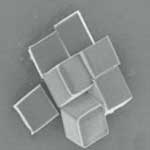 Using nanoparticles to combat cancer and a host of other diseases is an active area of research for many scientists. For decades, treating cancer has mostly involved injecting patients with toxic drugs. A practice, in which only a fraction of the drugs reach the intended target, killing healthy cells in the process and causing harmful side effects. Previous studies have shown that drug-carrying nanoparticles can accumulate in and attack tumors, in part because of their extremely small size, which helps allow them to pass through cell membranes. However, up until now, existing techniques have meant that targeting agents could only be delivered using spherical or granular shaped particles. Now, a team of scientists have demonstrated that nanoparticles designed with a specific shape, size and surface chemistry are taken up into cells and behave differently within cells depending on the characteristics of the particle.
Using nanoparticles to combat cancer and a host of other diseases is an active area of research for many scientists. For decades, treating cancer has mostly involved injecting patients with toxic drugs. A practice, in which only a fraction of the drugs reach the intended target, killing healthy cells in the process and causing harmful side effects. Previous studies have shown that drug-carrying nanoparticles can accumulate in and attack tumors, in part because of their extremely small size, which helps allow them to pass through cell membranes. However, up until now, existing techniques have meant that targeting agents could only be delivered using spherical or granular shaped particles. Now, a team of scientists have demonstrated that nanoparticles designed with a specific shape, size and surface chemistry are taken up into cells and behave differently within cells depending on the characteristics of the particle.
Sep 11th, 2008
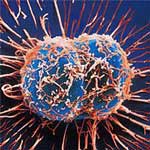 Several aspects determine how effective a pharmaceutical drug is. Probably the key issue is how well a drug molecule is able to reach its intended target. This need for target specific delivery of drugs has been well accepted in modern drug therapy. Many research efforts are geared towards improving not just the tissue accumulation, but also the cell-specific accumulation of drug molecules in the hope of improving the efficacy of these drug molecules. The ability to target nanoparticles to specific types of cancer cells is one of the main reasons that nanoparticles have gained favor as a promising drug delivery vehicle. By increasing the amount of an anticancer agent that gets to tumor cells, as opposed to healthy cells, researchers hope to minimize the potential side effects of therapy while maximizing therapeutic response. Now, a group of scientists has taken this approach one step farther by targeting the specific location inside a tumor cell, where a cancer drug then exerts its cell-killing activity.
Several aspects determine how effective a pharmaceutical drug is. Probably the key issue is how well a drug molecule is able to reach its intended target. This need for target specific delivery of drugs has been well accepted in modern drug therapy. Many research efforts are geared towards improving not just the tissue accumulation, but also the cell-specific accumulation of drug molecules in the hope of improving the efficacy of these drug molecules. The ability to target nanoparticles to specific types of cancer cells is one of the main reasons that nanoparticles have gained favor as a promising drug delivery vehicle. By increasing the amount of an anticancer agent that gets to tumor cells, as opposed to healthy cells, researchers hope to minimize the potential side effects of therapy while maximizing therapeutic response. Now, a group of scientists has taken this approach one step farther by targeting the specific location inside a tumor cell, where a cancer drug then exerts its cell-killing activity.
Sep 5th, 2008
 Nanomedicine, especially drug delivery with nano-sized drug carriers, is all the rage these days. The concept sounds simple: make nanoscale containers that can escape detection by the body's defense mechanisms, fill them with a drug, get them to the desired location within the body, release the drug payload and, presto, you've got a very effective and efficient weapon for instance to fight cancer. That this model works in principle has already been demonstrated in numerous studies. The same studies show the complicated nature and the many difficulties that scientists are facing in fabricating the right nanocontainers, getting them to the right location, controlling the release mechanism of the drug, measuring the drugs' efficacy, and monitoring the now empty delivery vehicles' fate. Researchers from the Indian Institute of Technology Guwahati present experimental results which suggest that the specificity of release of encapsulated nanoparticles could be achieved with an appropriate combination of encapsulating materials and the choice of an appropriate enzyme that would cleave the encapsulation to release the nanoparticles.
Nanomedicine, especially drug delivery with nano-sized drug carriers, is all the rage these days. The concept sounds simple: make nanoscale containers that can escape detection by the body's defense mechanisms, fill them with a drug, get them to the desired location within the body, release the drug payload and, presto, you've got a very effective and efficient weapon for instance to fight cancer. That this model works in principle has already been demonstrated in numerous studies. The same studies show the complicated nature and the many difficulties that scientists are facing in fabricating the right nanocontainers, getting them to the right location, controlling the release mechanism of the drug, measuring the drugs' efficacy, and monitoring the now empty delivery vehicles' fate. Researchers from the Indian Institute of Technology Guwahati present experimental results which suggest that the specificity of release of encapsulated nanoparticles could be achieved with an appropriate combination of encapsulating materials and the choice of an appropriate enzyme that would cleave the encapsulation to release the nanoparticles.
Aug 28th, 2008
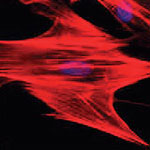 Regenerative medicine is an area in which stem cells hold great promise for overcoming the challenge of limited cell sources for tissue repair. Stem cell research is being pursued vigorously in laboratories all over the world (except in the U.S., where federal funding for embryonic stem cell research has been severely restricted by the current administration) in the hope of achieving major medical breakthroughs. Scientists are striving to create therapies that rebuild or replace damaged cells with tissues grown from stem cells and offer hope to people suffering from cancer, diabetes, cardiovascular disease, spinal-cord injuries, and many other disorders.
Regenerative medicine is an area in which stem cells hold great promise for overcoming the challenge of limited cell sources for tissue repair. Stem cell research is being pursued vigorously in laboratories all over the world (except in the U.S., where federal funding for embryonic stem cell research has been severely restricted by the current administration) in the hope of achieving major medical breakthroughs. Scientists are striving to create therapies that rebuild or replace damaged cells with tissues grown from stem cells and offer hope to people suffering from cancer, diabetes, cardiovascular disease, spinal-cord injuries, and many other disorders.
Aug 22nd, 2008
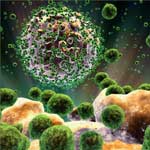 Modern pharmaceutics is a very imprecise, wasteful and sometimes even dangerous discipline. Not only do most drugs fail even before they make it to market (about 80% of drugs never make it through clinical trials) but even the efficacy of many drugs that are being prescribed for certain diseases is questionable. The most important challenge, though, is to deliver the correct dose of a particular therapeutic (small molecules, proteins, or nuclei acids) to a specific disease site. Since this is generally unachievable, therapeutics have to be administered in excessively high doses, thereby increasing the odds of toxic side effects. Nanotechnology offers great visions of improved, personalized treatment of disease. The hope is that personalized medicine will make it possible to develop and administer for each individual patient the appropriate drug, at the appropriate dose, at the appropriate time. The benefits of this approach are accuracy, efficacy, safety and speed. Today, commercial nanomedicine is at a nascent stage of development and the full potential of nanomedicine is years or decades away. Currently the most advanced area of nanomedicine is the development and use of nanoparticles for drug delivery.
Modern pharmaceutics is a very imprecise, wasteful and sometimes even dangerous discipline. Not only do most drugs fail even before they make it to market (about 80% of drugs never make it through clinical trials) but even the efficacy of many drugs that are being prescribed for certain diseases is questionable. The most important challenge, though, is to deliver the correct dose of a particular therapeutic (small molecules, proteins, or nuclei acids) to a specific disease site. Since this is generally unachievable, therapeutics have to be administered in excessively high doses, thereby increasing the odds of toxic side effects. Nanotechnology offers great visions of improved, personalized treatment of disease. The hope is that personalized medicine will make it possible to develop and administer for each individual patient the appropriate drug, at the appropriate dose, at the appropriate time. The benefits of this approach are accuracy, efficacy, safety and speed. Today, commercial nanomedicine is at a nascent stage of development and the full potential of nanomedicine is years or decades away. Currently the most advanced area of nanomedicine is the development and use of nanoparticles for drug delivery.
Jul 25th, 2008
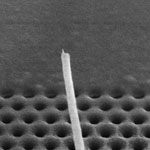 Much is being written about nanotechnology's role in vastly improving the detection and treatment of cancer. Detection of cancer at the earliest stage provides the greatest chance of survival. Unfortunately, cancer has a logarithmic growth rate. A one cubic centimeter size tumor may have 40-50 cell divisions and typically doctors don't see 80% of the life of a tumor. The detection of a protein pattern in blood serum can be helpful in evidencing a possible presence of cancer at an early stage. The problem is that 'early' means the capability of detecting very few molecules in dilute conditions. Now, in another step to improve the design and fabrication of devices for single molecule detection, new research has demonstrated an experimental capability of detecting down to as few as 10 organic molecules deposited on a quantum dot.
Much is being written about nanotechnology's role in vastly improving the detection and treatment of cancer. Detection of cancer at the earliest stage provides the greatest chance of survival. Unfortunately, cancer has a logarithmic growth rate. A one cubic centimeter size tumor may have 40-50 cell divisions and typically doctors don't see 80% of the life of a tumor. The detection of a protein pattern in blood serum can be helpful in evidencing a possible presence of cancer at an early stage. The problem is that 'early' means the capability of detecting very few molecules in dilute conditions. Now, in another step to improve the design and fabrication of devices for single molecule detection, new research has demonstrated an experimental capability of detecting down to as few as 10 organic molecules deposited on a quantum dot.
Jul 23rd, 2008
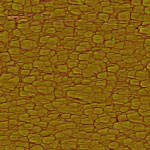 Modern medicine would be unthinkable without biomedical implants. The market for medical implant devices in the U.S. alone is estimated to be $23 billion per year and it is expected to grow by about 10% annually for the next few years. Implantable cardioverter defibrillators, cardiac resynchronization therapy devices, pacemakers, tissue and spinal orthopedic implants, hip replacements, phakic intraocular lenses and cosmetic implants will be among the top sellers. Current medical implants, such as orthopedic implants and heart valves, are made of titanium and stainless steel alloys, primarily because they are biocompatible. Unfortunately, a common complication associated with medical implants results from infectious biofilms which may cause chronic infection that is difficult to control. For instance, biofilms are present on the teeth as dental plaque, where they may become responsible for tooth decay and gum disease. Because teeth are easily accessible, removing plaque is not a problem. If biofilms develop on medical implants deep inside the body, though, they can become a serious, sometimes life-threatening problem. Preventing or limiting the formation of bacterial biofilm on the surface of implanted medical devices is an important approach to control bacterial biofilm-related infections. A new study demonstrates the effectiveness of a process combining surface nanocrystallization and thermal oxidation for reducing the biofilm's adherence to stainless steel.
Modern medicine would be unthinkable without biomedical implants. The market for medical implant devices in the U.S. alone is estimated to be $23 billion per year and it is expected to grow by about 10% annually for the next few years. Implantable cardioverter defibrillators, cardiac resynchronization therapy devices, pacemakers, tissue and spinal orthopedic implants, hip replacements, phakic intraocular lenses and cosmetic implants will be among the top sellers. Current medical implants, such as orthopedic implants and heart valves, are made of titanium and stainless steel alloys, primarily because they are biocompatible. Unfortunately, a common complication associated with medical implants results from infectious biofilms which may cause chronic infection that is difficult to control. For instance, biofilms are present on the teeth as dental plaque, where they may become responsible for tooth decay and gum disease. Because teeth are easily accessible, removing plaque is not a problem. If biofilms develop on medical implants deep inside the body, though, they can become a serious, sometimes life-threatening problem. Preventing or limiting the formation of bacterial biofilm on the surface of implanted medical devices is an important approach to control bacterial biofilm-related infections. A new study demonstrates the effectiveness of a process combining surface nanocrystallization and thermal oxidation for reducing the biofilm's adherence to stainless steel.
Jul 21st, 2008
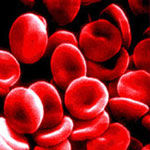 Any drug intended for systemic administration and all medical devices which will contact blood must undergo thorough biocompatibility testing. These tests include an in vitro assay to determine the material's potential to damage red blood cells (hemolysis). Hemolysis, the abnormal breakdown of red blood cells either in the blood vessels (intravascular hemolysis) or elsewhere in the body (extravascular), can lead to anemia or other pathological conditions. In the pharmaceutical industry, hematocompatibility testing is harmonized through the use of internationally recognized standard protocols. Nanotechnology- based medical devices and drug carriers are emerging as alternatives to conventional small-molecule drugs, and in vitro evaluation of their biocompatibility with blood components is a necessary part of early preclinical development. Many research papers have reported nanoparticle hemolytic properties but, so far, no in vitro hemolysis protocol has been available that is specific to nanoparticles. A new study published this month describes in vitro assays to study nanoparticle hemolytic properties, identifies nanoparticle interferences with these in vitro tests and provides the first comprehensive insight to potential sources of this interference, demonstrates the usefulness of including nanoparticle-only controls, and illustrates the importance of physicochemical characterization of nanoparticle formulations and visually monitoring test samples to avoid false-positive or false-negative results.
Any drug intended for systemic administration and all medical devices which will contact blood must undergo thorough biocompatibility testing. These tests include an in vitro assay to determine the material's potential to damage red blood cells (hemolysis). Hemolysis, the abnormal breakdown of red blood cells either in the blood vessels (intravascular hemolysis) or elsewhere in the body (extravascular), can lead to anemia or other pathological conditions. In the pharmaceutical industry, hematocompatibility testing is harmonized through the use of internationally recognized standard protocols. Nanotechnology- based medical devices and drug carriers are emerging as alternatives to conventional small-molecule drugs, and in vitro evaluation of their biocompatibility with blood components is a necessary part of early preclinical development. Many research papers have reported nanoparticle hemolytic properties but, so far, no in vitro hemolysis protocol has been available that is specific to nanoparticles. A new study published this month describes in vitro assays to study nanoparticle hemolytic properties, identifies nanoparticle interferences with these in vitro tests and provides the first comprehensive insight to potential sources of this interference, demonstrates the usefulness of including nanoparticle-only controls, and illustrates the importance of physicochemical characterization of nanoparticle formulations and visually monitoring test samples to avoid false-positive or false-negative results.
Jul 18th, 2008
 Using nanoparticles to combat cancer and a host of other diseases is an active area of research for many scientists. For decades, treating cancer has mostly involved injecting patients with toxic drugs. A practice, in which only a fraction of the drugs reach the intended target, killing healthy cells in the process and causing harmful side effects. Previous studies have shown that drug-carrying nanoparticles can accumulate in and attack tumors, in part because of their extremely small size, which helps allow them to pass through cell membranes. However, up until now, existing techniques have meant that targeting agents could only be delivered using spherical or granular shaped particles. Now, a team of scientists have demonstrated that nanoparticles designed with a specific shape, size and surface chemistry are taken up into cells and behave differently within cells depending on the characteristics of the particle.
Using nanoparticles to combat cancer and a host of other diseases is an active area of research for many scientists. For decades, treating cancer has mostly involved injecting patients with toxic drugs. A practice, in which only a fraction of the drugs reach the intended target, killing healthy cells in the process and causing harmful side effects. Previous studies have shown that drug-carrying nanoparticles can accumulate in and attack tumors, in part because of their extremely small size, which helps allow them to pass through cell membranes. However, up until now, existing techniques have meant that targeting agents could only be delivered using spherical or granular shaped particles. Now, a team of scientists have demonstrated that nanoparticles designed with a specific shape, size and surface chemistry are taken up into cells and behave differently within cells depending on the characteristics of the particle.
 Subscribe to our Nanotechnology Spotlight feed
Subscribe to our Nanotechnology Spotlight feed





